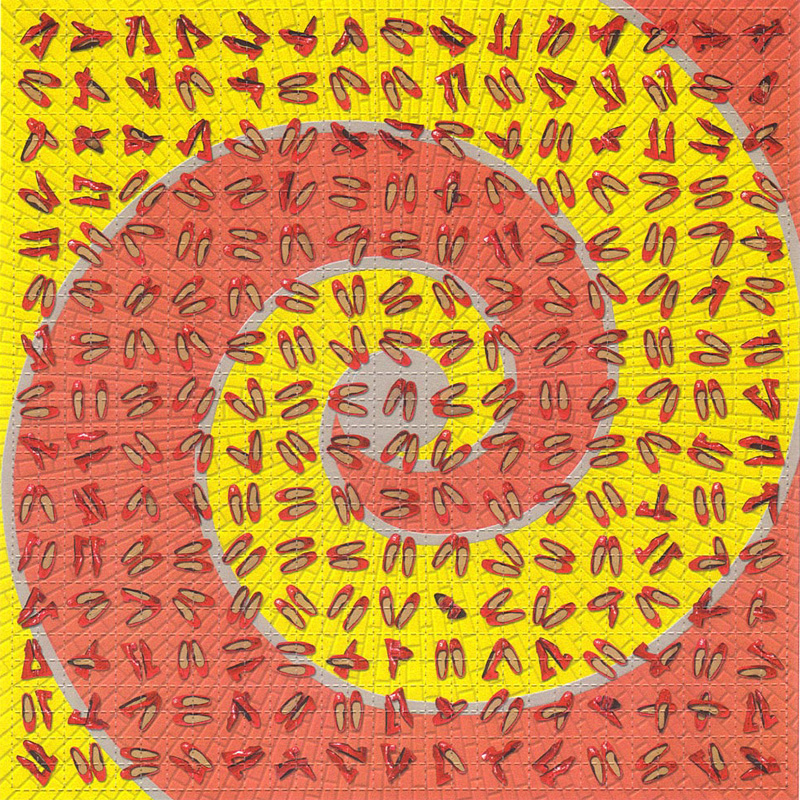|
Pip-T
pip-Tryptamine (pip-T), also known as ''N'',''N''-pentamethylenetryptamine, ''N'',''N''-piperidyltryptamine, or 3-(2-piperidinoethyl)indole, is a serotonin receptor modulator and possible serotonergic psychedelic of the tryptamine family. It is the derivative of tryptamine in which the amine has been cyclized into a piperidine ring. Its affinities () for serotonin receptors were 600nM for the serotonin 5-HT1A receptor, 760nM for the serotonin 5-HT2A receptor, and 1,250nM for the serotonin 5-HT2B receptor, whereas other serotonin receptors were not reported. The affinity of pip-T for the serotonin 5-HT2A receptor was about 10-fold lower than that of dimethyltryptamine (DMT) and was about 7-fold lower than that of pyr-tryptamine (pyr-T; ''N'',''N''-pyrrolidinyltryptamine). The drug produces hypolocomotion in rodents. In addition, it induces the head-twitch response, a behavioral proxy of psychedelic effects, in rodents. This was blocked by the serotonin 5-HT2A receptor antago ... [...More Info...] [...Related Items...] OR: [Wikipedia] [Google] [Baidu] |
Pyr-tryptamine
Pyr-T, also known as ''N'',''N''-tetramethylenetryptamine or as 3-(2-pyrrolidinoethyl)indole, is a lesser-known serotonin receptor modulator of the tryptamine family. It is the cyclized derivative of diethyltryptamine (DET) in which the ''N'',''N''-diethyl groups have been fused into a pyrrolidine ring. Use and effects In his 1997 book ''TiHKAL'' (''Tryptamines I Have Known and Loved''), Alexander Shulgin reported neither the dose range nor the duration of the drug. However, individual experiments employed 25 to 50mg orally and 70mg smoked. Pyr-T produced effects including malaise, feeling sick, unpleasantness, salivation, muscle and joint pains, dizziness, feeling high, and uncomfortableness. Hallucinogenic effects, for instance visuals, were either absent or minor. Pharmacology Pyr-T has been found to show affinity for serotonin receptors, including the serotonin 5-HT1A, 5-HT2A and 5-HT2C receptors. Its affinities () for these receptors were 30nM for the serotonin 5-HT1A ... [...More Info...] [...Related Items...] OR: [Wikipedia] [Google] [Baidu] |
Serotonin Receptor Modulator
5-HT receptors, 5-hydroxytryptamine receptors, or serotonin receptors, are a group of G protein-coupled receptor and ligand-gated ion channels found in multiple tissues including the central and peripheral nervous systems. They mediate both excitatory and inhibitory neurotransmission. The serotonin (i.e., 5-hydroxytryptamine, hence "5-HT") receptors are activated by the neurotransmitter serotonin, which acts as their natural ligand. The serotonin receptors modulate the release of many neurotransmitters, including glutamate, GABA, dopamine, epinephrine / norepinephrine, and acetylcholine, as well as many hormones, including oxytocin, prolactin, vasopressin, cortisol, corticotropin, and substance P, among others. Serotonin receptors influence various biological and neurological processes such as aggression, anxiety, appetite, cognition, learning, memory, mood, nausea, sleep, and thermoregulation. They are the target of a variety of pharmaceutical and recreational drugs, includin ... [...More Info...] [...Related Items...] OR: [Wikipedia] [Google] [Baidu] |
5-HT2B Receptor
5-Hydroxytryptamine receptor 2B (5-HT2B) also known as serotonin receptor 2B is a protein that in humans is encoded by the ''HTR2B'' gene. 5-HT2B is a member of the 5-HT2 receptor, 5-HT2 receptor family that binds the neurotransmitter serotonin (5-hydroxytryptamine, 5-HT). Like all 5-HT2 receptors, the 5-HT2B receptor is Gq protein, Gq/G11-protein coupled, leading to downstream activation of phospholipase C. Tissue distribution and function First discovered in the stomach of rats, 5-HT2B was challenging to characterize initially because of its structural similarity to the other 5-HT2 receptors, particularly 5-HT2C. The 5-HT2 receptors (of which the 5-HT2B receptor is a subtype) mediate many of the central and peripheral physiologic functions of serotonin. Cardiovascular effects include contraction of blood vessels and shape changes in platelets; central nervous system (CNS) effects include neuronal sensitization to tactile stimuli and mediation of some of the effects of halluci ... [...More Info...] [...Related Items...] OR: [Wikipedia] [Google] [Baidu] |
Scientific Literature
Scientific literature encompasses a vast body of academic papers that spans various disciplines within the natural and social sciences. It primarily consists of academic papers that present original empirical research and theoretical contributions. These papers serve as essential sources of knowledge and are commonly referred to simply as "the literature" within specific research fields. The process of academic publishing involves disseminating research findings to a wider audience. Researchers submit their work to reputable journals or conferences, where it undergoes rigorous evaluation by experts in the field. This evaluation, known as peer review, ensures the quality, validity, and reliability of the research before it becomes part of the scientific literature. Peer-reviewed publications contribute significantly to advancing our understanding of the world and shaping future research endeavors. Original scientific research first published in scientific journals co ... [...More Info...] [...Related Items...] OR: [Wikipedia] [Google] [Baidu] |
Misuse Potential
Substance misuse, also known as drug misuse or, in older vernacular, substance abuse, is the use of a drug in amounts or by methods that are harmful to the individual or others. It is a form of substance-related disorder, differing definitions of drug misuse are used in public health, medical, and criminal justice contexts. In some cases, criminal or anti-social behavior occurs when some persons are under the influence of a drug, and may result in long-term personality changes in individuals which may also occur. In addition to possible physical, social, and psychological harm, the use of some drugs may also lead to criminal penalties, although these vary widely depending on the local jurisdiction.. Drugs most often associated with this term include alcohol, amphetamines, barbiturates, benzodiazepines, cannabis, cocaine, hallucinogens, methaqualone, and opioids. The exact cause of substance abuse is sometimes clear, but there are two predominant theories: either a genetic pre ... [...More Info...] [...Related Items...] OR: [Wikipedia] [Google] [Baidu] |
Positive Reinforcement
Positive is a property of positivity and may refer to: Mathematics and science * Positive formula, a logical formula not containing negation * Positive number, a number that is greater than 0 * Plus sign, the sign "+" used to indicate a positive number * Positive operator, a type of linear operator in mathematics * Positive result, a result that has been found significant in statistical hypothesis testing * Positive test, a diagnostic test result that indicates some parameter being evaluated was present * Positive charge, one of the two types of electrical charge * Positive (electrical polarity), in electrical circuits * Positive lens, in optics * Positive (photography), a positive image, in which the color and luminance correlates directly with that in the depicted scene * Positive sense, said of an RNA sequence that codes for a protein Philosophy and humanities * Affirmative (policy debate), the team which affirms the resolution * Negative and positive rights, co ... [...More Info...] [...Related Items...] OR: [Wikipedia] [Google] [Baidu] |
Self-administration
Self-administration is, in its Medicine, medical sense, the process of a subject administering a Pharmacology, pharmacological substance to themself. A clinical example of this is the subcutaneous "self-injection" of insulin by a Diabetes, diabetic patient. In animal experimentation, self-administration is a form of operant conditioning where the Reinforcement, reward is a drug. This drug can be administered remotely through an implanted intravenous line or an intracerebroventricular injection. Self-administration of putatively addictive drugs is considered one of the most valid experimental models to investigate Substance dependence, drug-seeking and drug-taking behavior. The higher the frequency with which a test animal emits the operant behavior, the more rewarding (and Drug addiction, addictive), the test substance is considered. Self-administration of addictive drugs has been studied using humans, non-human primates, mice, invertebrates such as ants, and, most commonly, rat ... [...More Info...] [...Related Items...] OR: [Wikipedia] [Google] [Baidu] |
Conditioned Place Preference
Conditioned place preference (CPP) is a form of Pavlovian conditioning used to measure the motivational effects of objects or experiences. This motivation comes from the pleasurable aspect of the experience, so that the brain can be reminded of the context that surrounded the "encounter". By measuring the amount of time an animal spends in an area that has been associated with a stimulus, researchers can infer the animal's liking for the stimulus. This paradigm can also be used to measure conditioned place aversion (CPA) with an identical procedure involving aversive stimuli instead. Both procedures usually involve mice or rats as subjects. This procedure can be used to measure extinction and reinstatement of the conditioned stimulus. Certain drugs are used in this paradigm to measure their reinforcing properties. Two different methods are used to choose the compartments to be conditioned, and these are biased vs. unbiased. The biased method allows the animal to explore the apparat ... [...More Info...] [...Related Items...] OR: [Wikipedia] [Google] [Baidu] |
Hallucinogen
Hallucinogens, also known as psychedelics, entheogens, or historically as psychotomimetics, are a large and diverse class of psychoactive drugs that can produce altered states of consciousness characterized by major alterations in thought, mood, and perception as well as other changes. Hallucinogens are often categorized as either being psychedelics, dissociatives, or deliriants, but not all hallucinogens fall into these three classes. Examples of hallucinogens include psychedelics or serotonin 5-HT2A receptor agonists like LSD, psilocybin, mescaline, and DMT; dissociatives or NMDA receptor antagonists like ketamine, PCP, DXM, and nitrous oxide; deliriants or antimuscarinics like scopolamine and diphenhydramine; cannabinoids or cannabinoid CB1 receptor agonists like THC, nabilone, and JWH-018; κ-opioid receptor agonists like salvinorin A and pentazocine; GABAA receptor agonists like muscimol and gaboxadol; and oneirogens like ibogaine and harmaline, a ... [...More Info...] [...Related Items...] OR: [Wikipedia] [Google] [Baidu] |
Ketanserin
Ketanserin, sold under the brand name Sufrexal, is an antihypertensive agent which is used to treat arterial hypertension and vasospasm, vasospastic disorders. It is also used in scientific research as an antiserotonergic medication, agent in the study of the serotonin system; specifically, the 5-HT2 receptor, 5-HT2 receptor family. The drug is taken oral administration, by mouth. Side effects of ketanserin include dizziness, tiredness, edema, dry mouth, weight gain, and drug-induced QT prolongation, QT interval prolongation. Ketanserin acts as a binding selectivity, selective receptor antagonist, antagonist of the serotonin 5-HT2A receptor, 5-HT2A, α1-adrenergic receptor, α1-adrenergic, and histamine H1 receptor, H1 receptors. It also shows lower affinity (pharmacology), affinity for various other biological target, targets. Ketanserin was discovered at Janssen Pharmaceutica in 1980. It was the first serotonin 5-HT2A receptor antagonist to be discovered that showed selectiv ... [...More Info...] [...Related Items...] OR: [Wikipedia] [Google] [Baidu] |
Receptor Antagonist
A receptor antagonist is a type of receptor ligand or drug that blocks or dampens a biological response by binding to and blocking a receptor rather than activating it like an agonist. Antagonist drugs interfere in the natural operation of receptor proteins.Pharmacology Guide: In vitro pharmacology: concentration-response curves ." '' GlaxoWellcome.'' Retrieved on December 6, 2007. They are sometimes called blockers; examples include alpha blockers, beta b ... [...More Info...] [...Related Items...] OR: [Wikipedia] [Google] [Baidu] |
Psychedelic Drug
Psychedelics are a subclass of hallucinogenic drugs whose primary effect is to trigger non-ordinary mental states (known as psychedelic experiences or "trips") and a perceived "expansion of consciousness". Also referred to as classic hallucinogens or serotonergic hallucinogens, the term ''psychedelic'' is sometimes used more broadly to include various other types of hallucinogens as well, such as those which are atypical or adjacent to psychedelia like salvia and MDMA, respectively. Classic psychedelics generally cause specific psychological, visual, and auditory changes, and oftentimes a substantially altered state of consciousness. They have had the largest influence on science and culture, and include mescaline, LSD, psilocybin, and DMT. There are a large number of both naturally occurring and synthetic serotonergic psychedelics. Most psychedelic drugs fall into one of the three families of chemical compounds: tryptamines, phenethylamines, or lysergamides. T ... [...More Info...] [...Related Items...] OR: [Wikipedia] [Google] [Baidu] |






